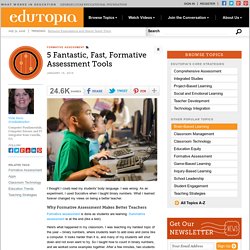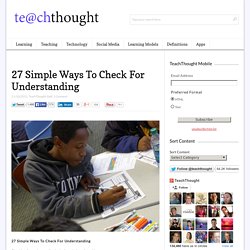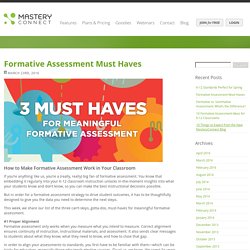

22 Powerful Closure Activities. Too many university supervisors and administrators criticize the absence of lesson closure, a dubious assessment practice likely caused by the improper use of Madeline Hunter’s lesson plan model (PDF) as a de facto checklist of eight mandatory teaching practices -- anticipatory set, objective and purpose, input, modeling, checking for understanding, guided practice, independent practice, and closure -- a custom that Hunter decried in 1985 (PDF).

Although it offers multiple benefits, please don't view closure as a professional must-do. What Is Closure? Closure is the activity that ends a lesson and creates a lasting impression, a phenomenon that Colorado State University professor Rod Lucero calls the recency effect. Teachers use closure to: Check for understanding and inform subsequent instructionEmphasize key informationTie up loose endsCorrect misunderstandings Students find closure helpful for: Creative Closure Activities 1. 2. 3. 4. 5. 6. 7. 8. 9. 10. Have kids sketch a book cover. 11. 33 Digital Tools for Advancing Formative Assessment in the Classroom. I came across a great blog post the other day – Formative Assessments Are Easier Than You Think – that told the firsthand account of a teacher, Steven Anderson, who implemented formative assessment in his classroom.

He used a sticky-note version of an exit ticket to elicit evidence of student learning and in his words, “what a difference that made.” Formative assessment is ‘easier than you think’ and with all the digital tools and apps now available for mobile devices it’s even easier. We’ve shared some digital tools before and with the five tools that Steven shared combined with our earlier suggestions there are now 33 digital tools that we’ve uncovered that are free or inexpensive and help teachers implement formative assessment in their classrooms. Here they are: A few of Steven’s discoveries: Lino – A virtual corkboard of sticky-notes so students can provide questions or comments on their learning. Poll Everywhere – Teachers can create a feedback poll or ask questions. Pick Me! 5 Fantastic, Fast, Formative Assessment Tools.
I thought I could read my students' body language.

I was wrong. As an experiment, I used Socrative when I taught binary numbers. What I learned forever changed my views on being a better teacher. Why Formative Assessment Makes Better Teachers Formative assessment is done as students are learning. Here's what happened in my classroom. "We've got this, it's easy," they said. I looked at the other students and asked, "Do you have this? " 27 Simple Ways To Check For Understanding. 27 Simple Ways To Check For Understanding Checking for understanding is the foundation of teaching.

Whether you’re using formative assessment for data to personalize learning within a unit, or more summative data to refine a curriculum map, the ability to quickly and easily check for understanding is a critical part of what you do. Formative Assessment. Edutopia-finley-53ways-check-for-understanding.pdf. Wiliam1999Formativepart2_8.pdf. Formative Assessment Strategies. MasteryConnect Blog » Blog Archive Formative Assessment Must Haves - MasteryConnect Blog. How to Make Formative Assessment Work in Your Classroom If you’re anything like us, you’re a (really, really) big fan of formative assessment.

You know that embedding it regularly into your K-12 classroom instruction unlocks in-the-moment insights into what your students know and don’t know, so you can make the best instructional decisions possible. But in order for a formative assessment strategy to drive student outcomes, it has to be thoughtfully designed to give you the data you need to determine the next steps. This week, we share our list of the three can’t-skips, gotta-dos, must-haves for meaningful formative assessment. #1 Proper Alignment Formative assessment only works when you measure what you intend to measure.
In order to align your assessments to standards, you first have to be familiar with them—which can be tricky for educators, especially those who teach elective courses. Questions to Ask About Assessment Alignment Which standard(s) do I want to assess? 5 Fantastic, Fast, Formative Assessment Tools.